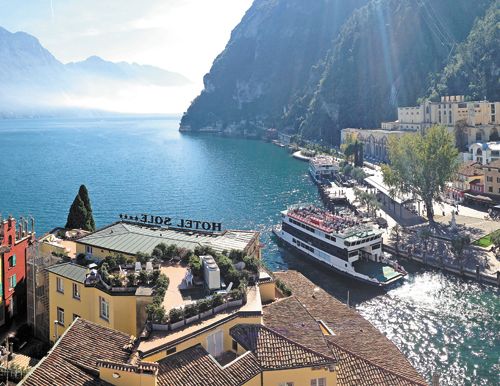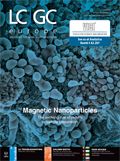40th International Symposium On Capillary Chromatography and the 13th GC×GC Symposium
The 40th International Symposium in Capillary Chromatography (ISCC) and 13th GC×GC Symposium will be held at the Palazzo dei Congressi, in Riva del Garda, Italy, from 29 May–3 June 2016.
Photo Credit: Adrienne Ossko/EyeEm/Getty Images

The 40th International Symposium in Capillary Chromatography (ISCC) and 13th GC×GC Symposium will be held at the Palazzo dei Congressi, in Riva del Garda, Italy, from 29 May–3 June 2016.
Over the years, the International Symposium on Capillary Chromatography (ISCC) has established its reputation as a forum for microcolumn separation techniques. Since the first meeting in Hindelang in 1975, the most important developments in capillary gas chromatography, microcolumn liquid chromatography, and electromigration techniques have been presented in this symposium series.
The format and the atmosphere of the 40th meeting will be similar to previous meetings, this year with particular emphasis on mass spectrometry (MS). Past meetings have been held in Hindeleng, Riva del Garda, Monterey, Baltimore, Gifu, Kobe, Wintergreen, Park City, Las Vegas, Dalia, Albuquerque, Portland, and
San Diego.
This year the “Palazzo dei Congressi” in Riva del Garda, Italy, will accommodate the 40th meeting from 29 May–3 June 2016. The six-day event will feature recent findings from leading academic and industrial experts in the form of lectures and posters. Apart from the most recent advances in the fields of pressure and electrodriven microcolumn separation techniques, and comprehensive twoâdimensional gas chromatography (2D GC), this year particular emphasis will be directed to combinations of capillary chromatography with various forms of MS.
The conference offers sessions on capillary GC, microcolumn liquid chromatography (LC), electromigration methods, and micro-fabricated analytical systems, which are expected to cover lab-on-a-chip, column technology, coupled and multidimensional techniques, comprehensive techniques, hyphenated techniques, sampling and sample preparation, trace analysis, and automation.
Application sessions include environmental applications, energy/petrochemical/industrial applications, biomedical/pharmaceutical applications, and the analysis of natural products, food, flavours, and fragrances. Workshop seminars of instrument manufacturers and an extensive exhibition of instrumentation, accessories, and supplies will run in parallel to the scientific programme.
At the meeting, the 2016 Marcel Golay Award sponsored by PerkinElmer will be presented in recognition of outstanding contributions in the field of separation science. The Leslie Ettre award, sponsored by PerkinElmer, will be presented to a young scientist for research on capillary GC applied to environmental or food analyses. The Giorgio Nota award, sponsored by Waters, will be presented to a scientist in recognition of a lifetime of achievement in capillary LC. The John Phillips Award, sponsored by LECO and Restek, will be awarded to individuals who have made outstanding contributions to the field of GC×GC analysis. The GC×GC Lifetime Achievement Award, sponsored by LECO and Restek, honours an experienced GC×GC scientist who has made significant contributions to the field.
At the symposium CASSS and Chromaleont will promote scholarships for young researchers. For more information please visit www.chromaleont.it/iscc. To encourage scientific exchange and friendship building, the scientific programme will be enhanced with the well-known “Riva Social Programme”, which consists of a welcome reception, cocktail party, classical concert, wine and cheese evening, and farewell cocktails.
Considering the interest in comprehensive techniques, the 13th GC×GC Symposium will be organized during the same period to allow scientists to attend both meetings. The 13th GC×GC Symposium will start on 29 May 2016 with a course presented by experts in the field covering the fundamental aspects of comprehensive techniques and a plenary session on 30 May 2016.
For both meetings, abstracts for consideration as lecture or poster presentations can be submitted on-line at http://www.chromaleont.it/iscc. All abstracts will be reviewed on the basis of scientific merit, novelty, and practical application. Presenters at the meeting may also have their work published in a special volume of the Journal of Chromatography A.
E-mail: iscc@chromaleont.it • Website: http://www.chromaleont.it/iscc

New TRC Facility Accelerates Innovation and Delivery
April 25th 2025We’ve expanded our capabilities with a state-of-the-art, 200,000 sq ft TRC facility in Toronto, completed in 2024 and staffed by over 100 PhD- and MSc-level scientists. This investment enables the development of more innovative compounds, a broader catalogue and custom offering, and streamlined operations for faster delivery. • Our extensive range of over 100,000 high-quality research chemicals—including APIs, metabolites, and impurities in both native and stable isotope-labelled forms—provides essential tools for uncovering molecular disease mechanisms and exploring new opportunities for therapeutic intervention.
New Guide: Characterising Impurity Standards – What Defines “Good Enough?”
April 25th 2025Impurity reference standards (IRSs) are essential for accurately identifying and quantifying impurities in pharmaceutical development and manufacturing. Yet, with limited regulatory guidance on how much characterisation is truly required for different applications, selecting the right standard can be challenging. To help, LGC has developed a new interactive multimedia guide, packed with expert insights to support your decision-making and give you greater confidence when choosing the right IRS for your specific needs.

.png&w=3840&q=75)

.png&w=3840&q=75)



.png&w=3840&q=75)



.png&w=3840&q=75)








